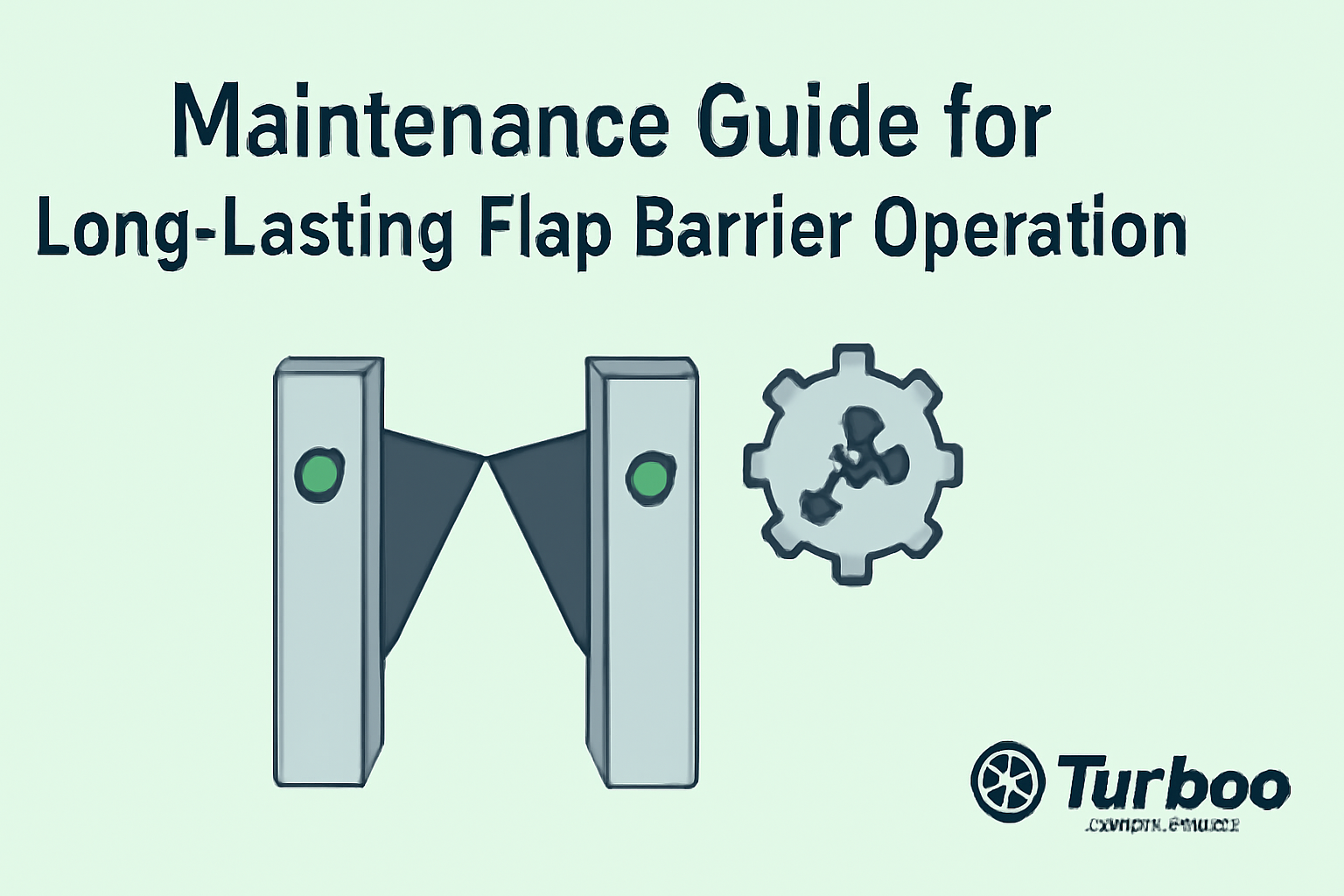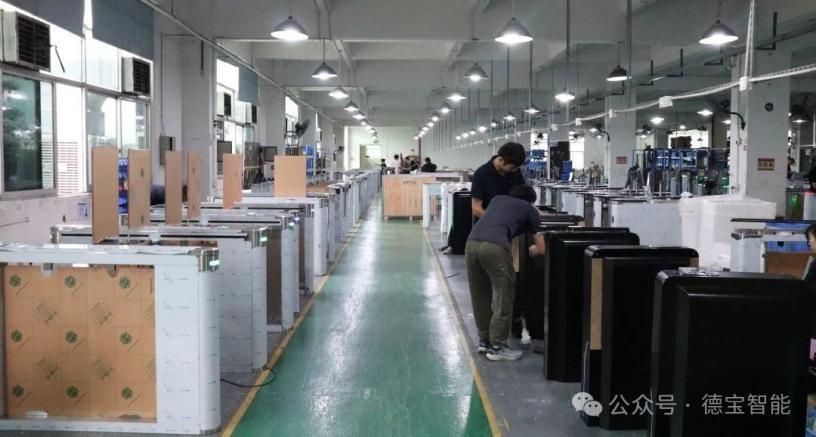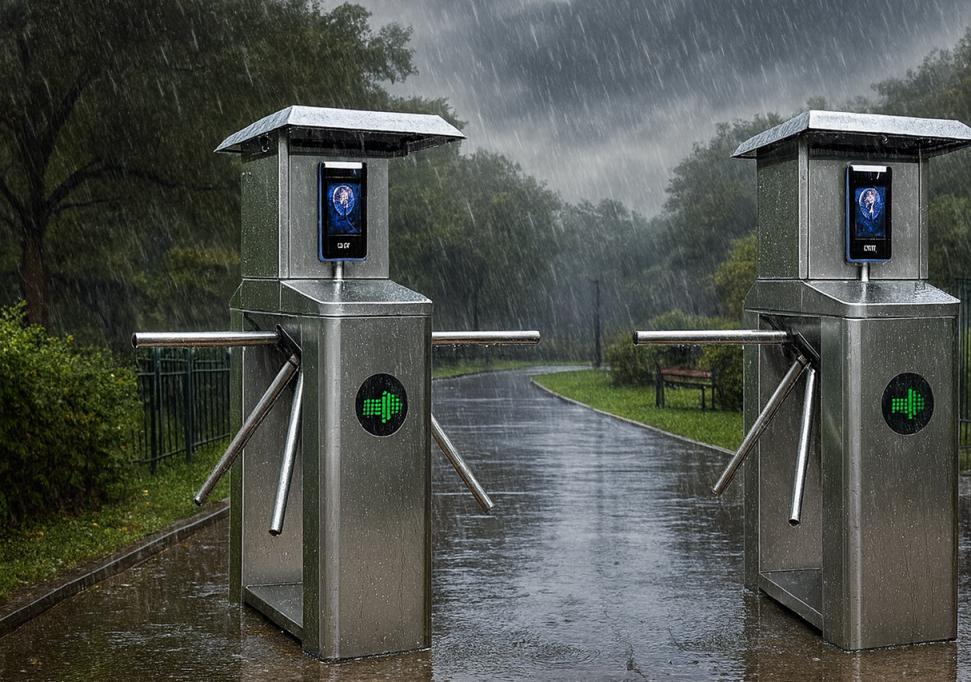Maintenance Guide for Long-Lasting Flap Barrier Operation


Flap barriers are a big investment in any facility’s security system. Over time, dust, wear, and electrical issues can affect their smooth operation. Without proper maintenance, even the best barriers may fail at crucial moments. This guide will show you simple yet effective maintenance practices to keep your flap barriers running reliably for years. Whether you manage a transit station, corporate lobby, or stadium entrance, adopting a structured maintenance plan ensures consistent performance, extends equipment life, and reduces repair costs.
Why Regular Maintenance Is Critical for Flap Barrier Performance and Lifespan
Routine upkeep is the foundation of flap barrier maintenance and the key to preserving system reliability. The barrier’s moving arms, optical sensors, and control electronics face daily stresses—from high foot traffic to environmental factors like dust and humidity. Ignoring small issues early on can lead to unexpected breakdowns that interrupt operations and compromise security. Moreover, a well-documented maintenance regimen helps you comply with manufacturer warranties and regulatory standards, avoiding voided warranty claims or compliance failures.
Impact of Wear and Tear
Every cycle of opening and closing exerts mechanical stress on hinges, motors, and linkages. Over months and years, these repetitive motions can loosen bolts, wear down gear teeth, and degrade sensor alignment. The result is slower response times, uneven gate movement, and, eventually, complete mechanical failure. By inspecting critical components regularly, you catch wear indicators—such as unusual noises or slight play in the arm joints—before they escalate into major repairs or part replacements.
Ensuring System Reliability
A dependable access control system hinges on flawless barrier operation. Delays or malfunctions during peak periods not only frustrate users but also create security risks if staff resort to propping gates open or bypassing controls. Consistent preventive maintenance—including cleaning, lubrication, and functional testing—fortifies your flap barriers against these failures. In addition, systematic record-keeping of maintenance activities provides clear evidence for auditors, insurers, and facility stakeholders that you prioritize uptime and safety.
Basic Daily and Weekly Visual Checks
Visual inspections form the first line of defense in any preventive maintenance program. By carving out time each day or week for quick checks, maintenance teams can spot dirt accumulation, loose components, or power anomalies that, if neglected, lead to bigger headaches down the road.
Cleaning Sensors and Optical Surfaces
Dirt, fingerprints, and airborne particles can coat optical sensors and compromise their ability to detect approaching users. Start each shift by gently wiping sensor lenses and LED windows with a lint-free cloth. Avoid harsh chemicals—use a mild, non-abrasive cleaner if needed. Keeping sensors pristine ensures accurate detection and reduces false triggers or no-open events.
Inspecting Moving Parts for Obstructions
Debris such as paper scraps, gum, or small trash items often finds its way into the barrier mechanism. A weekly visual scan around the base and pivot points helps you remove any blockages before they scratch housings or jam rollers. Check for wear on rubber seals or bumpers and replace these inexpensive parts at first sign of cracking.
Verifying Power and Control Indicators
Most flap barriers feature status LEDs, display panels, or audible alerts that signal power health and error conditions. During your daily walk-around, note any warning lights—such as low-battery indicators for backup systems—or error codes displayed on control modules. Logging these alerts and resetting normal statuses promptly helps you track recurring issues that may require deeper diagnostics.
Monthly Maintenance Tasks
In addition to surface-level checks, monthly maintenance dives into functional tests and component health. These tasks typically take one to two hours per unit but pay off by catching subtle degradations before they manifest in failures.
Testing Sensor Accuracy and Calibration
Sensors can drift out of alignment or sensitivity over time. Create a simple test routine: walk through each lane at normal and slow paces to confirm the barrier arms open reliably. If you notice hesitation or inconsistent triggers, follow the manufacturer’s calibration steps—often accessible via the control-panel menu—and re-run the walk test. For more complex sensor issues, consult your troubleshooting guide to diagnose underlying wiring or firmware concerns.
Lubricating Mechanical Components
Motors and pivot joints require periodic lubrication to minimize friction and wear. Use only the lubricants specified in the barrier’s technical manual—typically a light machine oil or silicone-based grease. Apply sparingly to bearings, hinges, and gear racks, then cycle the barrier several times to distribute the lubricant evenly. Over-lubrication can attract dust, so wipe away any excess once distribution is complete.
Checking Electrical Connections and Battery Health
Loose terminals or corroded contacts can cause intermittent power losses, leading to unexpected barrier stops. Open access panels and gently tug on wiring bundles to verify secure connections. For units with battery backups, measure battery voltage under load and confirm it meets the manufacturer’s minimum operating threshold. Replace aged batteries according to the replacement schedule to guarantee reliable emergency operation.
Annual Service Requirements
Once a year, a deeper service and system-wide evaluation put your flap barriers through their paces. Annual upkeep often requires scheduling downtime and coordinating with professional technicians to ensure compliance with warranties and safety standards.
Full System Calibration and Software Updates
Beyond sensor recalibration, annual servicing should include reviewing firmware and software versions. Many barrier control units receive periodic updates that improve performance, add security patches, or introduce new features. Back up existing settings before applying updates, then recalibrate all motion and sensor parameters to factory-recommended values. Verifying that each lane responds correctly to fire-alarm signals and manual-release commands is especially important to maintain [long-term operation] and safety.
Comprehensive Durability Test and Load Simulation
Simulating real-world usage conditions helps you gauge the barrier’s endurance. An annual durability test—such as cycling the barrier several thousand times at variable speeds—reveals hidden weaknesses in motors or linkages. Conduct these load tests in off-peak hours, monitoring motor current draw and temperature. Significant deviations from baseline values may indicate impending component fatigue that needs preemptive replacement.
Reviewing Warranty and Compliance Documentation
Service contracts and warranty terms often require proof of annual maintenance to remain valid. Gather maintenance logs, calibration records, and test reports into a consolidated dossier. Review the current warranty coverage to confirm whether specific parts or services incur additional fees. Keeping documentation organized not only protects your investment but also smooths audits by regulatory bodies or insurers.
Common Issues Found During Maintenance and How to Resolve Them
Despite the best maintenance plans, certain problems recur across facilities. Recognizing these common issues—and applying tested fixes—minimizes unplanned downtime and repair costs.
Barrier Jamming or Rapid Wear
Symptom: Barrier arms stall mid-travel or exhibit uneven motion.
Cause: Accumulated debris, worn bearings, or misaligned drive gears.
Resolution: Remove obstructions, inspect and replace worn bearings, realign gear assemblies per the manufacturer’s mechanical tolerance specs. A brief durability test after repairs confirms clearance issues are resolved.
Sensor Malfunctions and False Triggers
Symptom: Gates open randomly or fail to open when approached.
Cause: Dirt on optical lenses, electromagnetic interference, or degraded sensor modules.
Resolution: Clean sensors, reroute power and data cables away from high-voltage lines, and swap out aging sensor heads. If false triggers persist, recalibrate sensitivity through the control panel and run an interference test using a handheld RF meter.
Alignment and Calibration Drift
Symptom: The barrier completes its cycle but stops slightly off-center, causing friction and noise.
Cause: Temperature fluctuations, mechanical settling, or loose mountings.
Resolution: Loosen mounting bolts, recentralize the gate using the alignment marks provided on the frame, then retighten to the specified torque. Recalibrate the end-of-travel switches or optical limit sensors to reset cycle endpoints accurately.
The Role of Professional Servicing for Compliance and Warranty Validity
While in-house teams can handle many maintenance tasks, periodic professional servicing ensures that complex issues receive expert attention and that barrier servicing complies with legal and warranty requirements.
Scheduling Certified Technicians
Manufacturers and third-party service providers often offer certified technicians trained on specific flap barrier models. Schedule comprehensive service visits at least once per year, or more frequently in high-traffic environments. Certified technicians perform advanced diagnostics—such as oscilloscope testing on control boards—and can replace proprietary components under warranty without risking policy voidance.
Maintaining Service Records
Detailed service reports—documenting tests performed, parts replaced, and firmware versions installed—serve as official records for auditors, insurers, and internal stakeholders. Use digital maintenance-management systems to upload technician reports immediately after each visit. Clear records demonstrate due diligence, protect warranty coverage, and simplify compliance reviews.
For routine issues, your in-house team can leverage the manufacturer’s service portal to order genuine spare parts and access technical bulletins on common failure modes.
How Preventive Maintenance Improves System Reliability and Reduces Cost
Investing in preventive maintenance directly boosts system reliability while lowering long-term expenses. Proactive upkeep prevents catastrophic failures, extends component lifespans, and optimizes repair schedules.
Long-Term Operation Benefits
A structured maintenance plan slows performance degradation, ensuring flap barriers continue to open and close within manufacturer-specified cycle times. This consistency reduces user complaints, avoids emergency repairs, and preserves the system’s security integrity. Moreover, avoided downtime translates into uninterrupted revenue for facilities charging access fees or hosting ticketed events.
Case Study: Reduced Downtime Through Preventive Maintenance
Consider a metropolitan transit hub that logged an average of ten barrier-related service calls per month before implementing a preventive schedule. After instituting daily visual checks, monthly calibrations, and annual professional servicing, the hub saw service calls drop by 70% within six months. Maintenance costs fell by 40%, and unexpected closures during rush hour—once a major headache—became virtually nonexistent. This real-world example illustrates how preventive maintenance pays dividends in both reliability and cost control.
For additional strategies on building your preventive program, refer to this industry-leading maintenance guide and explore best practices in equipment reliability.
Conclusion
Establishing a comprehensive flap barrier maintenance program is essential to safeguard both operational continuity and user safety. By combining daily visual inspections with monthly functional tests, annual professional servicing, and prompt resolution of common issues, facilities can extend the lifespan of their barriers and significantly reduce repair expenses. Thorough documentation—from calibration logs to technician reports—not only preserves warranty coverage but also verifies compliance with safety standards. Ultimately, a commitment to preventive care ensures your flap barriers remain reliable assets that protect assets, revenue, and reputations over the long haul.
Quick Maintenance Tips for Reliable Flap Barrier Operation
- Daily Sensor Cleaning: Wipe optical lenses with a lint-free cloth to prevent false triggers.
- Weekly Obstruction Checks: Inspect pivot points and remove debris around moving parts.
- Monthly Calibration: Walk through each lane to test sensor accuracy and realign if needed.
- Lubricate Joints: Apply manufacturer-approved grease or oil to hinges and gear racks.
- Battery Health Check: Measure backup battery voltage under load conditions.
- Annual Firmware Updates: Back up settings, apply software patches, and recalibrate system.
- Durability Testing: Cycle barriers in off-peak hours to detect hidden mechanical wear.
- Professional Inspection: Schedule certified technicians for in-depth diagnostics and warranty validation.
- Maintain Records: Log all maintenance activities and store service reports in a shared system.
- Continuous Improvement: Review maintenance data quarterly to refine procedures and reduce costs.
Implementing these quick steps will help you achieve consistent performance, extend equipment life, and maintain peak system reliability for your flap barriers.












